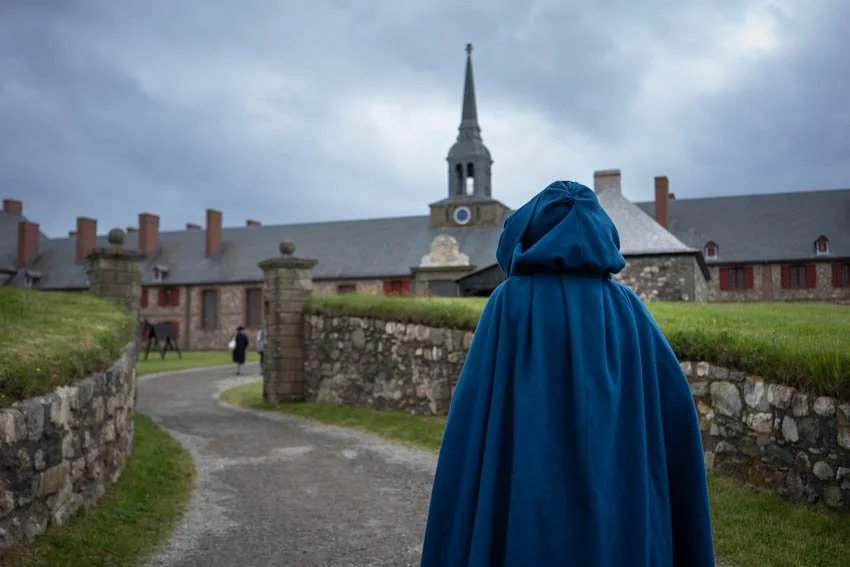The world is my canvas, the camera is my brush
Fortress of Louisbourg
The Fortress of Louisbourg is the largest reconstruction project in North America. The original settlement was founded in 1713 by the French and named after Louis XIV. France chose to establish a new fortress at Louisbourg, on Cape Breton Island, Nova Scotia, to protect its North American interests. It developed over several decades into a thriving center for fishing and trade and was fortified against the threat of British invasion. Louisbourg was besieged twice by the British before finally being destroyed in the 1760s. The site lay untouched until well into modern times, when archaeologists began to reconstruct the fortress as it was in the 18th century,
The community of Louisbourg was home to soldiers, fishermen, officials, innkeepers, servants, and slaves. Its 50 years as a French colonial capital left a rich and largely undisturbed archaeological record as well as vast official and personal records, parish registers, plans, maps, and the after-death inventories of the diverse residents who once lived here.
Many people were inspired to research Louisbourg’s story, to collect objects connected to the lives of its citizens and events here, and to protect its ruins. Their work made it possible for Parks Canada to recreate the Louisbourg that one visits today. The reconstruction of roughly one quarter of the buildings and fortifications is situated on the original foundations. Where and how to build was based on the excellent records kept by the officials and parish records. A vital tool for furnishing the buildings is the “after-death inventory”. It lists the objects an individual owned at the time of their death. These lists provided the information about what the people owned so that their workplaces and homes could be recreated using antiques or reproductions that matched their personal possessions.
One can now experience life in Louisbourg as it was during its heyday. During the summer months, hundreds of re-enactors or “animators” of all ages, from wealthy merchants to poor soldiers, populate the streets of the restored fortress, working, playing, and living life as they would have in 1744.
In all the years I have lived in Nova Scotia, this summer was the first time I have visited the historical site of the Fortress of Louisbourg. It was right up my alley, as I love to travel to countries that take me back in time. Instead of flying for thirteen hours or more, I could drive there in just five.


























